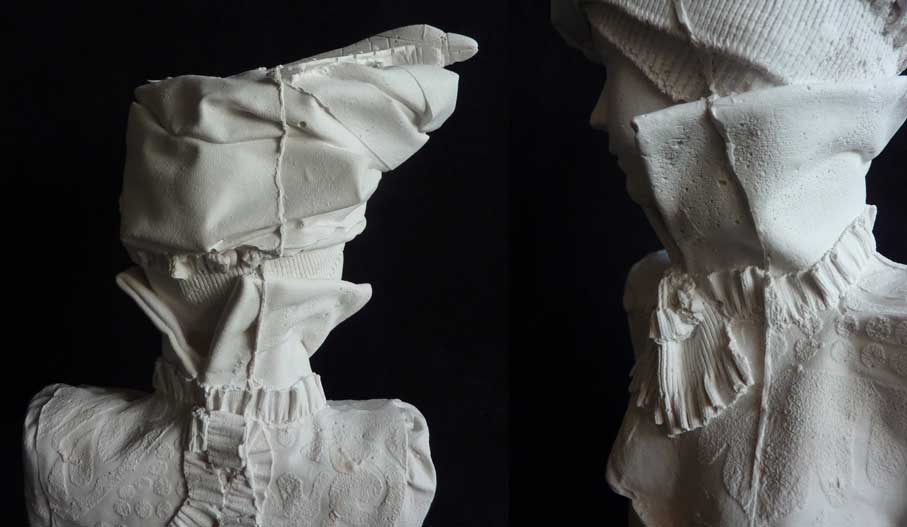kathy
dalwood home menu
order contact blog
| THE HUNTER & GATHERER (blog link) |
| 19th Jan 2011 |
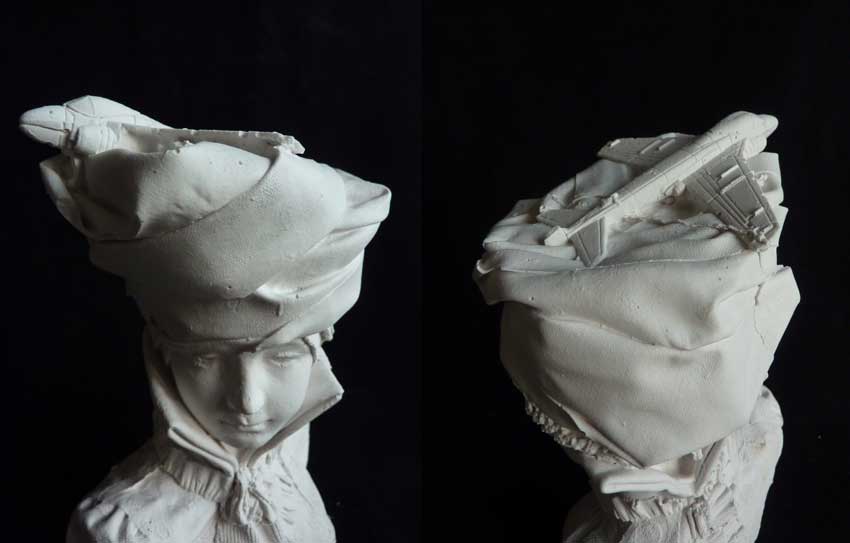 |
The title of this post is a phrase that could very well capture what British artist and designer Kathy Dalwood does best. Through the seemingly limited possibilities offered by weighty and abrasive materials like concrete, her imagination ventures far and wide, casting about for sculptural novelties. |
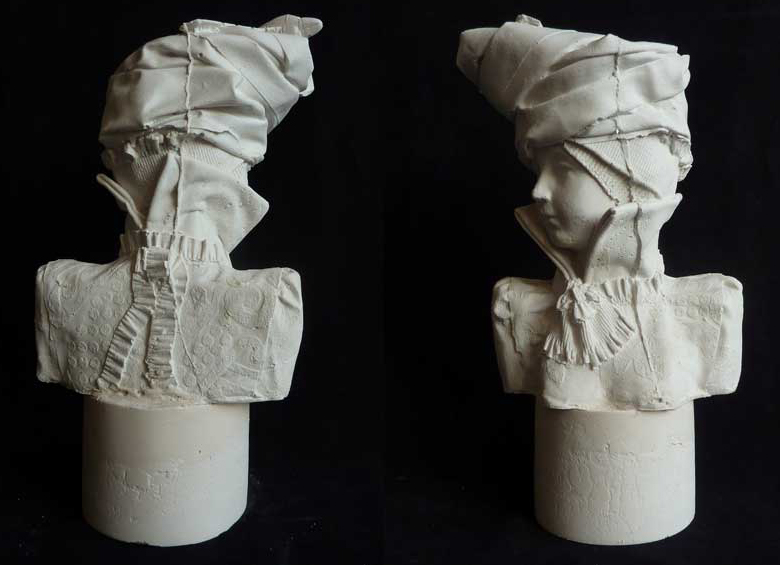 |
Interestingly enough, “casting about” is a term that originates from one of the oldest arts known to man: hunting. It isn’t, however, necessarily just about the ravenous search for game; the hounds would cast about for a long-lost scent, for the spoor of an animal that, whilst missing, is retained in memory. Many of Dalwood’s sculptures - like the one pictured above (“Aviatrix”) - carry the whiff of a reverent classicism. Her works betray a number of spirited yet precarious returns, fresh in their own right, to the many renditions of classicism that have persisted throughout history. However, it would be wrong to presume that her work maintains some kind of blind obeisance to time-honoured tradition. In fact, there is something that is subtly playful and unassumingly voguish about the Dalwoodian art of casting. It is as if those flowing flowing tassles made of concrete, or the dragoon with a miniature Tower Bridge perched upon his hat, or that aeroplane resting on a neatly wrapped turban, are examples of how classically-inspired work, far from being always already conventional or hackneyed, can be reborn into something refreshingly imaginative. |
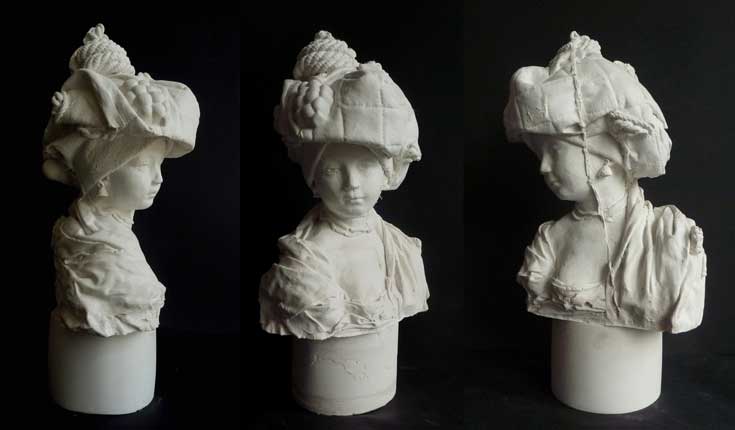 |
"Ideas creep up on you slowly and for a period of time you find yourself being drawn to something visual without fully understanding what it is that intrigues you, what you are going to do about it and where it fits in with your work." (Kathy Dalwood at Mint) |
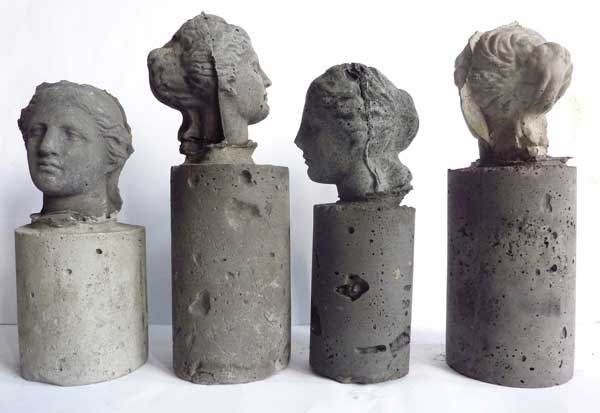 |
Dalwood’s plaster and concrete works range from miniature, rugged figurines cast from their eighteenth-century porcelain counterparts to grand public sculpture installations and architectural friezes inspired by the starched frills of Elizabethan costume. She retains with remarkable skill the acute attention to detail that is indicative of the classical genre. But at the same time - and as if to purposely yet implicitly defy any demand for antiquarian purity - Dalwood’s style is thoroughly idiosyncratic. She proves that objects of neoclassical ilk can indeed be renewed for a postmodern age. |
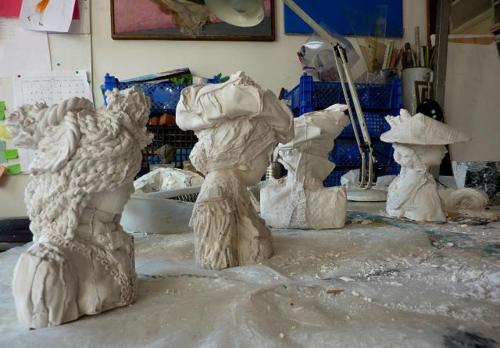 |
Also included in Dalwood’s repertoire are Shift Design (an interior design firm) and collaborations on product design. Speaking of the former, the interior of Dalwood’s own studio (the happenings of which are recorded in her studio blog) is - at least for those of us who long for that ideal studio or office - just as inspiring. |
 |
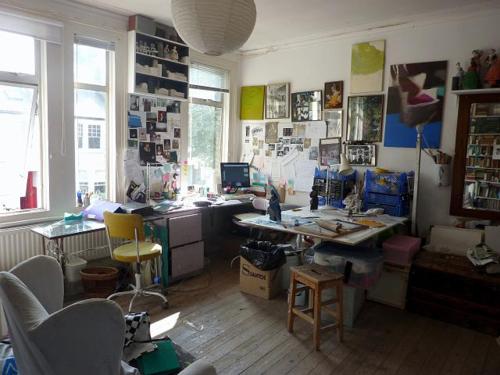 |
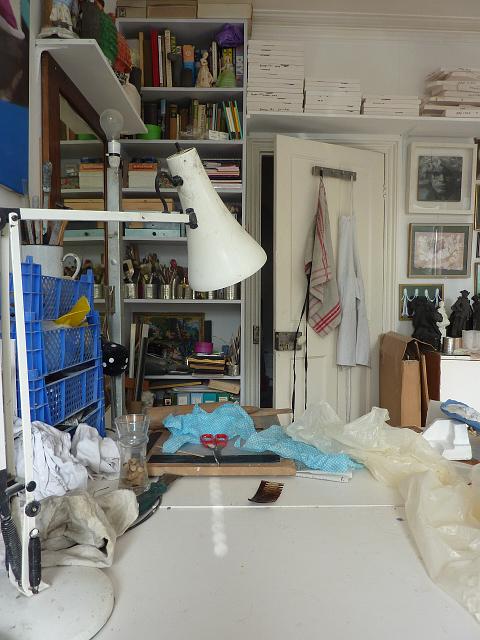 |
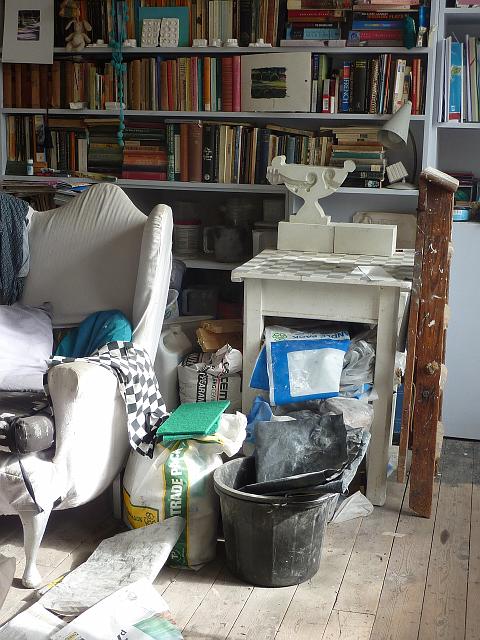 |
Visit her website and studio blog to experience more of Dalwood’s world of classicism and concrete. |
|
|
|
